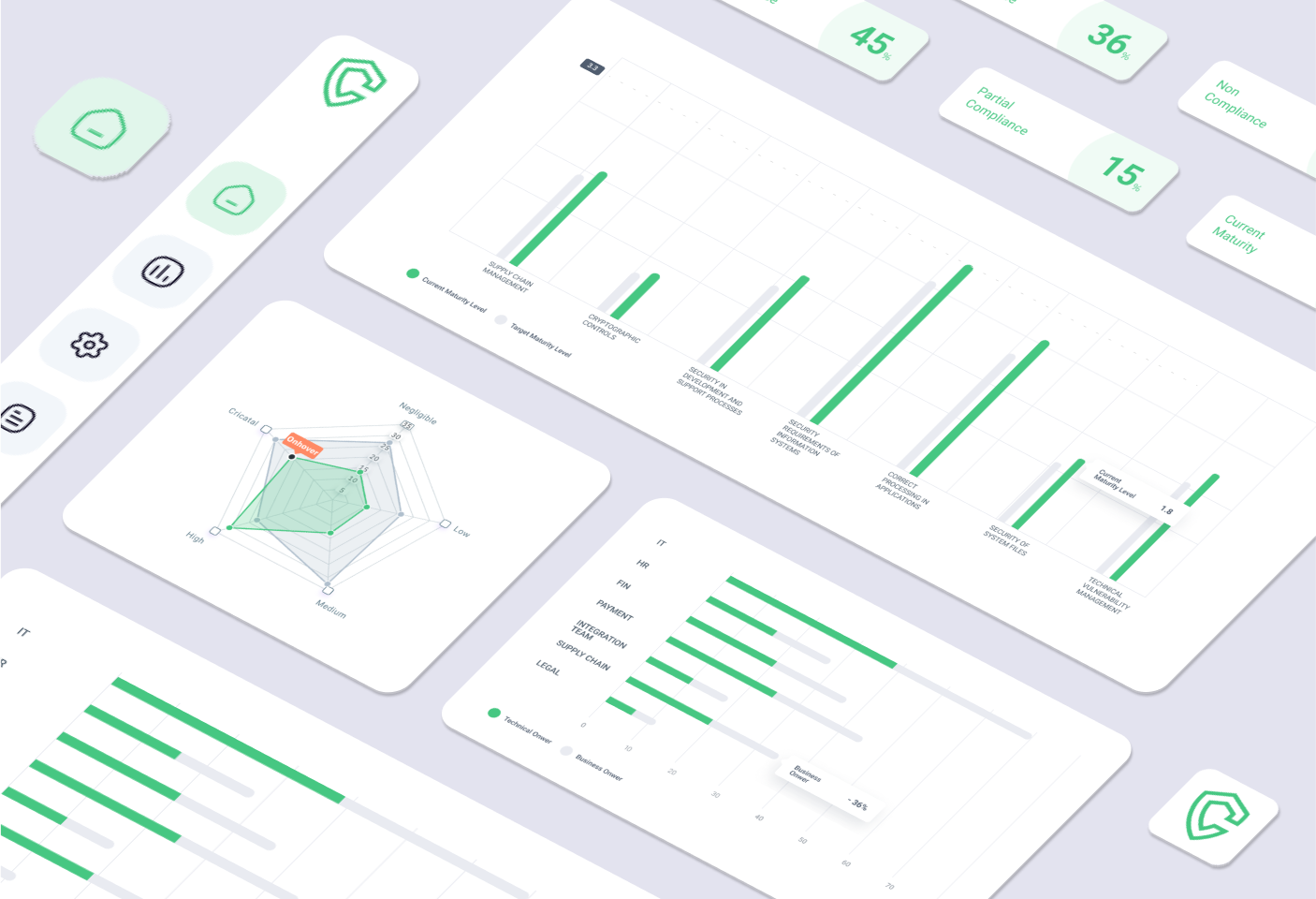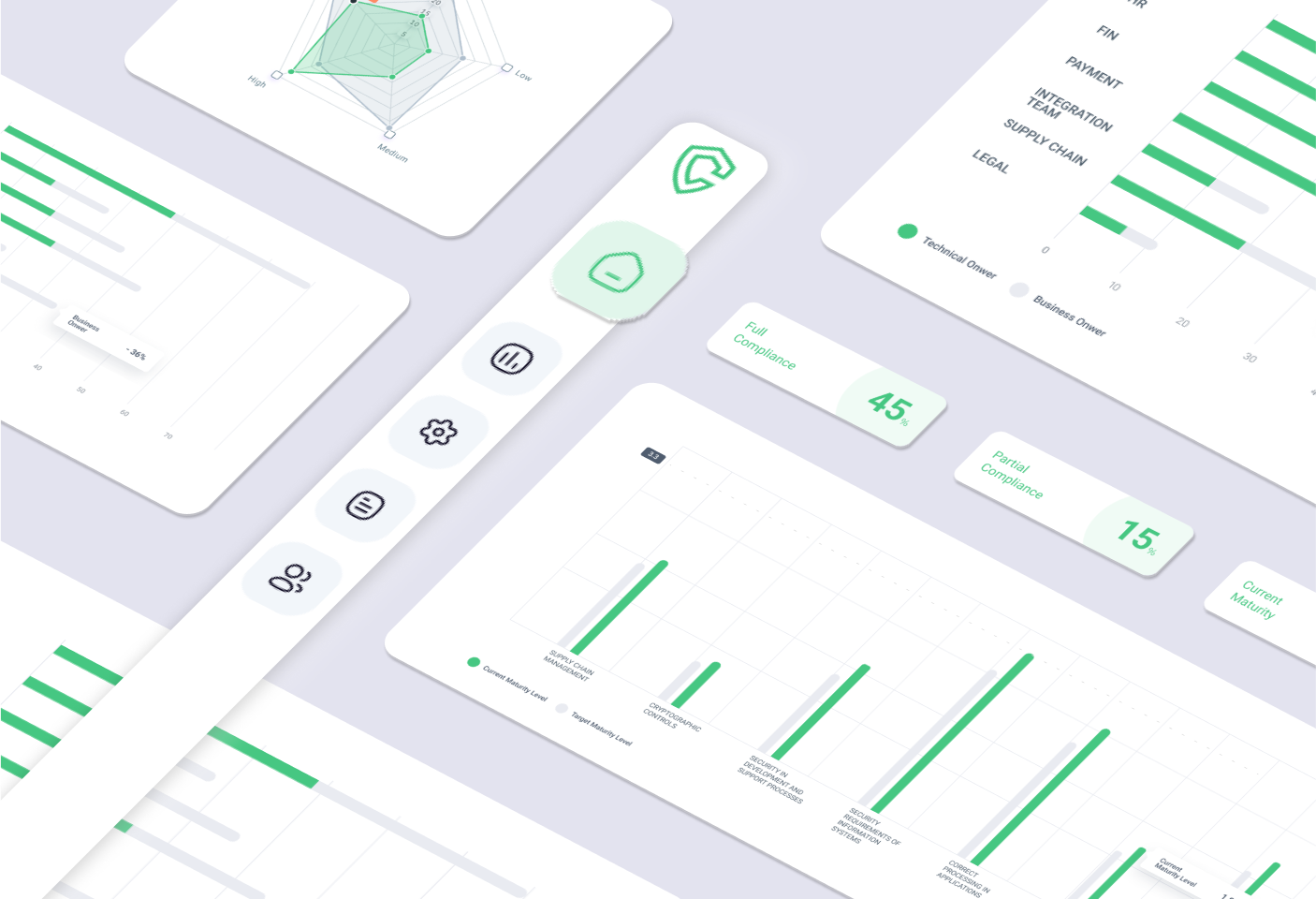What Is Cyber Risk Management: Frameworks, Policies, and Best Practices

The key difference between organizations that withstand cyber incidents and those that don’t often lies in preparation. As cybercriminals become more advanced each year, successful businesses have learned that systematically managing risk is better than trying to react after an attack. Cyber risk management turns security from a reactive burden into a strategic advantage that fosters growth while safeguarding what matters most.
Understanding Cyber Risk Management
Cyber risk management is the systematic process of identifying, assessing, and controlling vulnerabilities that could compromise your organization’s data, systems, and operations. Rather than attempting to eliminate every possible threat, this approach focuses on understanding which risks matter most to your business and implementing practical measures to reduce their potential impact.
The International Organization for Standardization defines risk as “the effect of uncertainty on objectives.” In cybersecurity terms, this means acknowledging that threats exist while building a framework that allows your organization to function despite them. The goal isn’t perfection, it’s resilience.
Why Traditional Security Measures Fall Short
Twenty years ago, businesses could install a firewall and consider their cybersecurity handled. Today’s organizations face a different reality. Cybercriminals have become more sophisticated, persistent, and better equipped. The average cost of a cyber attack now exceeds $1.1 million, with data breaches averaging over $4 million globally.
Beyond financial impact, organizations experience devastating secondary effects. Research shows that 54% of companies suffer productivity losses following an attack, 43% report negative customer experiences, and 37% face damage to their brand reputation. Perhaps most concerning is that 66% of businesses would terminate relationships with partners who fall victim to fraud and lose their payment, making cyber risk a supply chain issue as well.
The Four Pillars of Cyber Risk Management
Successful cyber risk management follows a structured process that enables organizations to move from reactive responses to proactive defense.
1. Identification
The first step involves cataloging your assets and understanding where vulnerabilities exist. This includes:
- Hardware and software inventories
- Cloud-hosted and on-premise systems
- IoT devices and network endpoints
- Third-party vendor connections
- Data storage locations and access points
Organizations must also identify the threats specific to their asset types. Physical devices face theft risks, while cloud-deployed data remains vulnerable to remote attacks. Understanding these threat-asset relationships provides the foundation for everything that follows.
2. Assessment
Once risks are identified, organizations must evaluate them based on two critical factors: likelihood and potential impact. Not all risks deserve equal attention. A vulnerability that’s unlikely to be exploited and would cause minimal damage differs significantly from a high-probability threat that could shut down operations.
This assessment phase should include:
- Asset valuation and prioritization
- Threat probability analysis
- Impact severity evaluation
- Dependency mapping to understand cascading effects
- Vulnerability identification across systems
The key is developing a clear understanding of your risk profile—which threats could realistically affect your organization and what the consequences would be.
3. Control and Mitigation
After assessing risks, organizations must decide how to address them. Four primary strategies exist:
Avoid: Eliminate the risk entirely by discontinuing risky activities or removing vulnerable assets.
Transfer: Shift the risk to another party through insurance or outsourcing.
Accept: Acknowledge certain risks as acceptable given their low likelihood or impact.
Mitigate: Implement controls to reduce the probability or impact of threats.
Most organizations use a combination of these approaches. Mitigation typically involves multiple layers of defense:
- Technical controls (firewalls, encryption, multi-factor authentication)
- Administrative controls (policies, procedures, training programs)
- Physical controls (access restrictions, surveillance systems)
- Regular penetration testing and vulnerability scanning
Complyan provides centralized tools for tracking these controls, assigning ownership, and monitoring their effectiveness over time.
4. Monitoring and Iteration
Cyber risk management isn’t a one-time project, it’s an ongoing process. New threats emerge constantly, business operations change, and previously acceptable risks may become unacceptable.
Continuous monitoring involves:
- Regular security audits and assessments
- Real-time threat detection systems
- Performance tracking of existing controls
- Compliance monitoring for regulatory requirements
- Incident response capabilities
Organizations should establish key risk indicators (KRIs) that signal when risks are increasing beyond acceptable thresholds. These metrics enable proactive responses rather than reactive damage control.
The Third-Party Risk Challenge
Your cybersecurity is only as strong as your weakest vendor. This reality became painfully clear when malware at one of Target’s vendors exposed 110 million credit card numbers. Third-party risk management has become a critical component of overall cyber risk strategy.
Organizations should:
- Conduct security assessments before onboarding new vendors
- Require vendors to demonstrate compliance with relevant standards
- Monitor vendor security postures throughout the relationship
- Establish clear contractual obligations regarding data protection
- Maintain up-to-date documentation of vendor risks
The interconnected nature of modern business means that vendor compromises can directly impact your organization, making supplier fraud a growing concern according to industry experts.
Framework Selection and Implementation
Several established frameworks can guide your cyber risk management program:
NIST Cybersecurity Framework: Provides five core functions (Identify, Protect, Detect, Respond, Recover) that offer a comprehensive approach to managing cybersecurity risk.
ISO/IEC 27001: An international standard focused on information security management systems, emphasizing systematic approaches to managing sensitive data.
SOC 2: Particularly relevant for service providers, this framework ensures controls around security, availability, processing integrity, confidentiality, and privacy.
PCI-DSS: Required for organizations handling payment card data, with specific requirements for risk assessment and vulnerability management.
The choice of framework often depends on industry requirements, regulatory obligations, and organizational maturity. Many organizations adopt multiple frameworks to address different aspects of their operations.
The Role of Automation
Manual processes cannot keep pace with modern threats. Complyan help organizations:
- Continuously scan for vulnerabilities across their environment
- Monitor for suspicious activity and potential breaches
- Validate vendor security credentials in real-time
- Track compliance with internal policies and external regulations
- Generate reports for stakeholders and auditors
Automation reduces human error, a leading cause of security incidents, while freeing security teams to focus on strategic initiatives rather than repetitive tasks.
Conclusion
Ignoring cyber risk is costly but organizations with structured risk management programs can respond faster to threats, reduce attack impact, meet compliance requirements, and maintain trust.
When viewed as a business enabler, not a cost center, cybersecurity empowers organizations to pursue opportunities confidently, knowing risks are managed.
Success starts with a thorough risk assessment, followed by a structured plan with clear ownership, measurable goals, and regular reviews. Complyan automates workflows and analytics make risk management smarter and more efficien





 Governance and Policy Management
Governance and Policy Management